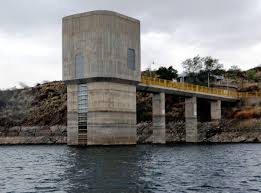
Antique steam train halts in Arandis

Deputy Head of the German Embassy, Mr Ullrich Kinne (right) officiating at the cutting of the ribbon, witnessed by the Mayor of Arandis, His Worship Daniel Muuhura.

The teachers of the Namibia Institute for Mining and Technology (NIMT) with the Mayor of Arandis, Daniel Muuhura (third from left), Mr. Eckhart Müller, Executive Director of NIMT, (middle left) and Deputy Head of the German Embassy, Mr Ullrich Kinne, (middle right) in front of the restored passenger coach.
The narrow-gauge steam engine, its coal wagon as well as three other historic wagons, one for passengers, one for goods, and one for cattle, which were restored by students of the Namibia Institute for Mining and Technology (NIMT), symbolise the beginning of the railway age in Namibia and are therefore of great cultural significance.
Attending the ceremony were the Mayor of Arandis, Daniel Muuhura, the Executive Director of the Namibia Institute for Mining and Technology, Eckhart Müller, the Deputy Head of the German Embassy, Ullrich Kinne as well as 600 students and guests. The restoration of the steam engine was supported by the German Embassy with a sum of N$250,000 as part of Germany’s support for cultural heritage.
Kinne said since 1981, Germany has been supporting the preservation of cultural heritage across the globe as part of the Federal Foreign Office’s Cultural Preservation Programme. Namibia is one of the major recipients: Since 1985, approximately N$10 million have been made available for the preservation of Namibia’s rich cultural heritage.
In September of 1897, the work on Deutsch Suedwest Afrika’s first major railway line between Swakopmund and Windhoek began. With stations in Welwitschia, Karibib and Okahandja, the railway line eventually reached Windhoek in June 1902.
It was constructed as a 600mm narrow-gauge railway line and operated until 1960.
The steam engine that was handed over was already in use before the First World War and is the last one of its kind in Namibia. Its restoration makes an important contribution to preserving Namibia’s rail history.
















































